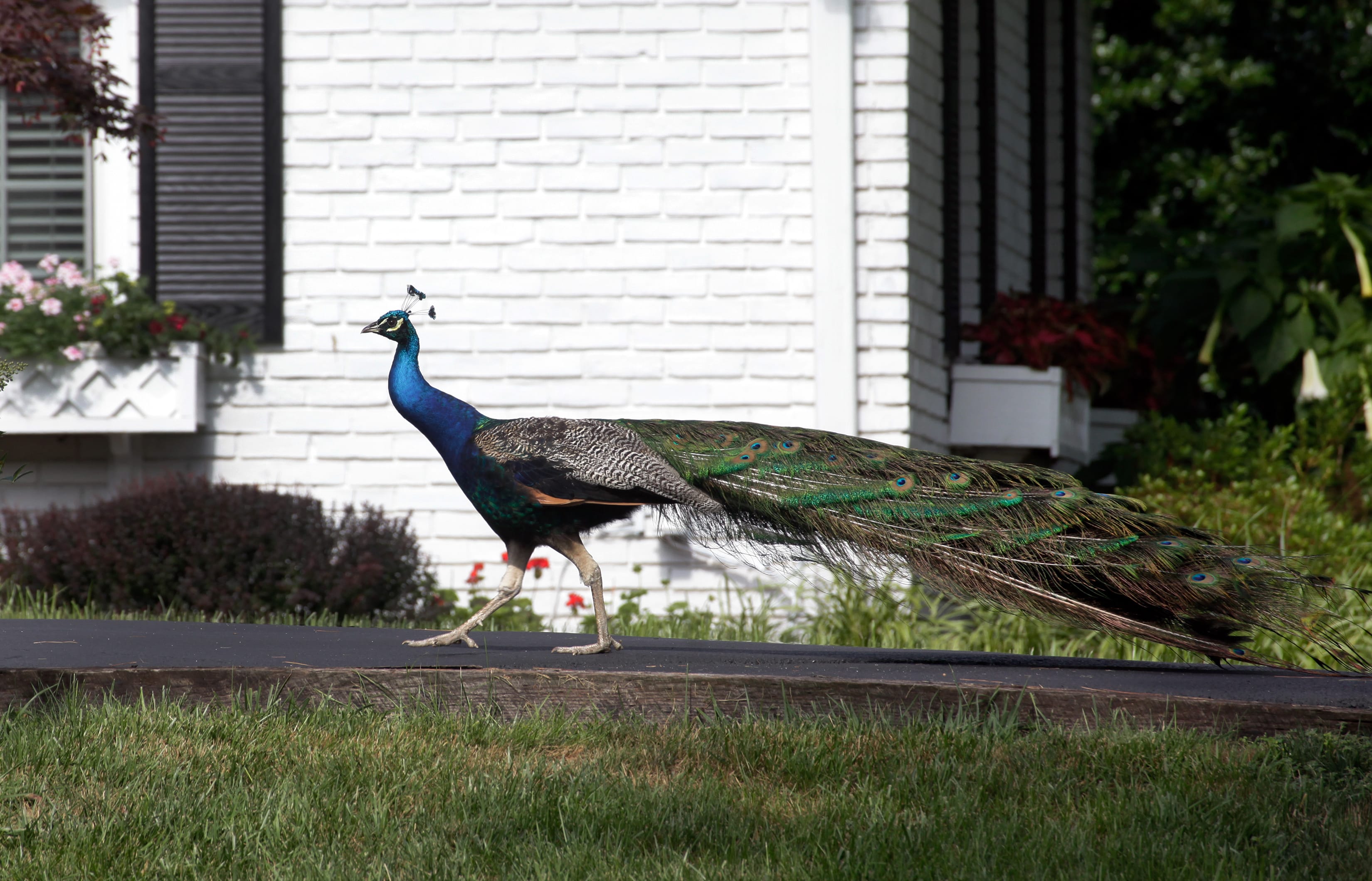This isn’t your standard wild goose chase.
A peacock has been on the run in Montgomery County, Md., for months, crisscrossing parts of Silver Spring since at least December. Residents have almost become used to its presence.
“‘Oh, have you seen our peacock yet?’ ” Sara Foraker, 36, said she asks her guests. Foraker said the bird swings by her house almost every day, often lounging on a backyard picnic table. “It’s so second nature to us.”
The peacock, presumably a male, with its iridescent blue neck and long colorful tail, strutted across the suburban Rippling Brook Drive in late July, its head bobbing back and forth as it pranced up a driveway and across a well-manicured lawn.
“It’s just sort of a member of the neighborhood now,” said Robert Tomlinson, 55, who with his son spotted the bird in early May.
The peacock appears to have roosted on Blair Stone Lane and has spent nearly every day in the Kim family’s backyard since December, minus a month-long absence in the spring, Jennie Kim said.
Her children, 11-year-old Hannah and 9-year-old Hyun Ku, known as “Junior,” have become avian experts, researching its loud squawk and collecting the feathers strewn across the yard.
“I don’t think that the phrase ‘birdbrain’ is exactly correct,” Junior said last week, noting that the peacock almost always returns for food and sometimes walks along the sidewalk.
“I told you, it’s a smart bird,” Hannah said to her brother.
The family leaves out wheat bread, birdseed and water for their newfound friend, which often relaxes under a swing set in the shade and sleeps in a nearby tree.
Joop Kuhn, the animal care manager for the San Diego Zoo’s bird department, said the peacock’s patterns are motivated by its stomach and safety. “They adapt very well to the environment that they’re in,” he said. “They’re very resourceful.”
The birds live 10 to 20 years and eat a variety of foods, including mice, frogs, snakes, grubs, fruit, vegetables and flowers, Kuhn said.
“As long as he has food — regular access to food — water and shelter, he’s going to live a long time,” Kuhn said. “It sounds like he already has a routine.”
Owner not found
Peafowls — males are peacocks, females are peahens — are native to India, Sri Lanka, Java, Myanmar (also known as Burma) and African rain forests, depending on the species.
But not Maryland.
There are “quite a few” living with owners in Montgomery County, according to Jeanette Wright, a field services supervisor for Montgomery County’s animal services division.
The department captured another peacock in Silver Spring on May 17, Wright said, about five miles away from this one — which has never been seen by the county’s animal services officers, despite numerous resident sightings.
“The problem is, by the time we get there, the bird’s gone,” Deputy Director Paul Hibler said.
The county does not require peacock owners to have a license, but aviaries must be at least 100 feet from other dwellings. Efforts to locate the peacock’s owner were unsuccessful, and National Zoo officials say it’s not one of theirs. The owner could face a $100 fine and a civil citation for the at-large bird, Hibler said.
“Everybody’s wondering where it came from,” said Bob Corcoran, 75, who has seen the peacock twice.
“I was looking out our patio, and there it was,” he said. “Just strutting around.”
Eggs can start at $40, and adult birds can fetch $100 to $2,000, depending on the species and coloring, said Lisa McNair, 49, who owns six peafowls.
“It didn’t even occur to me that somebody owned peacocks,” said Carol Boyd, 51, who spotted the bird hanging around a peacock lawn ornament in early June. “It would be like you saw a giraffe walking down someone’s yard.”
For Foraker, the peacock’s presence was a surprise that has lasted for weeks. “We’re hoping that he leaves a feather somewhere,” she said. “It doesn’t really get that old.”
Foraker’s family moved to the area recently, and her young daughters think that their new backyard is a zoo.
“We thought it was our little welcoming committee,” she joked.



